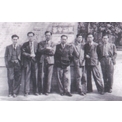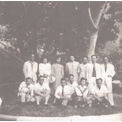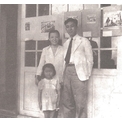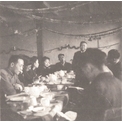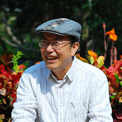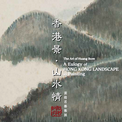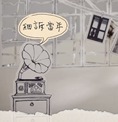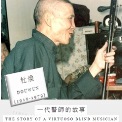“Human Art Club-the fortress of fine arts in Hong Kong.”
── Wang Mengtian
Human Art Club (Renjian huahui) was known for its extensive number of reputed former members as well as its creative and thoughtful name, “renjian” (human world). Much curiosity has been placed on where the name, “renjian”, comes from. One of its members, Tan Xuesheng, holds this view: “Hong Kong is heaven for expatriates and the rich. Our new art movement is to represent the masses. It is because of this difference between heaven and the people’s world that Human Art Club is founded.” Although this explanation is more or less related to Tan’s political inclination, it does convey the mission of the art club-to voice out for the people through art.
Another member, Huang Mengtian, recollected the course of naming the art club. One night in early 1946, during a meeting between the members, which include Huang Xinbo, Liang Yongtai, Lu Wuya, Chen Yutian, Chen Shi and Huang Mengtian, etc., the matter of the naming their new art club was raised. They envisioned a name that should embody a sense of artistic sentiment while not failing to convey the significance of life; yet, they were unable to draw a conclusion that night. On the following day, in the afternoon, Huang Xinbo proposed the name “Human Art Club”. Huang Mengtian conjectured that the concept of “renjian” might have come from the literary work of Russian writer Maxim Gorky (1868-1936), My Apprenticeship, 1916. Although this has been the widely accepted view, another good friend of Huang Xinbo, Chen Shi, offers a different interpretation.
In an article about the art club, Chen Shi casts new light on the origin of its name. One morning in 1946, Huang Xinbo visited her to discuss the naming of the art club. “Renjian” was among the several suggestions Chen made, and which Huang has favoured and chosen. Chen further pointed out that “renjian” did not originate from Maxim Gorky’s novel but rather from the famous poem by the Southern Tang (937-975) emperor Li Houzhu (937-978), Waves Washing Sand. It says, “Look at the withered flowers, fallen on the running stream; Spring has gone in a glimpse. Was it Heaven? Or the World of the People?” Without further query or explanation at the time when the term was proposed, a beautiful misinterpretation was created.
No matter how the name “renjian” has come about, the founding of Human Art Club marked the gradual development of Hong Kong cultural activities in the post-war period. Firstly, most of the art society’s members came from the mainland, who planted the strong creative passion of the mainland in Hong Kong. Human Art Club, founded by Huang Xinbo, Huang Mengtian and other major artists in 1946, was the stronghold for the new arrivals, coming from big cities such as Shanghai, Guangzhou, Guilin, Kunming and Chongqing. As the war was coming to an end, they eventually settled in Hong Kong and carried on their creative production here. Among them were woodblock artists such as Huang Xinbo, Wang Qi, Liu Jianan, Huang Yongyu, Liang Yongtai; comic artists Mi Gu, Te Wei, Zhang Guangyu, Liao Bingxiong, Fang Cheng, Shen Tongheng; oil painters and Chinese ink painters such as Fu Luofei, Guan Shanyue, Fu Tianchou, Chen Yutian and Lu Wuya; and art historian Huang Mengtian. Their continuous artistic creations at the time significantly enriched the local art and cultural scene.
Besides, the members of Human Art Club also organised and participated in many artistic activities, breathing new life into the Hong Kong art scene. One of its most impressive programmes was its first art exhibition titled “The Stormy China”. The comic exhibition displayed over one hundred art pieces, and has left a strong impact on the community. A local newspaper, Chinese Business Daily, described the event as “a showcase of corrupt officials and a blood-stained record of people’s suffering”, fulfilling the art club’s mission to be engaged with the real life. In addition to exhibitions such as “Six Persons Art Exhibition”, “Comic Exhibition Against US Aid to Japan”, “Spring Exhibition of Human Art Club” and a number of oil painting and woodblock solo exhibitions, the members sent in comics and illustrations to various newspapers and magazines, exposing the deeply imbedded social problems in a light-hearted yet satirical way. For a long period of time, their work could be seen published in Chinese Business Daily, Wen Wei Po, Sing Tao Daily, Ta Kung Pao, etc. Human Art Club was greatly influential towards the society at the time for their effort in bridging the people’s daily living with art.
In addition, the establishment of Human Publishing House further promoted the development of cultural activities. In the words of Huang Xinbo, Human Publishing House and Human Art Club are “siblings” who share the same ideals and beliefs. The publishing house was set up in 1946 by members of Human Art Club and other mainland writers who moved to Hong Kong after the war. Although it was closed in 1951, it has compiled and published a large number of books in various series during those six years. Examples are Selected Essays by Human Publishing House, Selected Poems by Human Publishing House, Selected Translations by Human Publishing House, and Selected Books for Young People. The vast number and diversity of publication illustrates the contribution of Human Publishing House, in nourishing the cultural and artistic atmosphere within Hong Kong.
In fact, the substantial influence Human Art Club caused in post-war Hong Kong was largely indebted to Huang Xinbo for his significant contribution. From the early stages of its organisation and planning, to later day-to-day operations, Huang had worked strenuously for the society. Though Huang humbly refused to take the position of chairman, he has always remained as one of the core members. Liao Bingxiong even thought of Huang as the real leader of Human Art Club.
Everyone who knew Huang Xinbo would agree that he was always enthusiastic and helpful towards those around him. Even as an overworked and underpaid journalist at Chinese Business Daily in the late 1940s, Huang never refused to help out his friends at their difficult times. One of the most impressive examples would be his assistance to those recently arrived mainland artists in finding accommodation in Hong Kong. Sometimes, he even reserved space at his home for them to stay a while. Among those he had received were Lu Di and Wang Qi. He was always ready to embrace his friends, as he considered that “friends today will be companions tomorrow.” No wonder Human Art Club has united a large group of “companions”, who left many of their opulent and enlightening tracks on the Hong Kong art scene.


